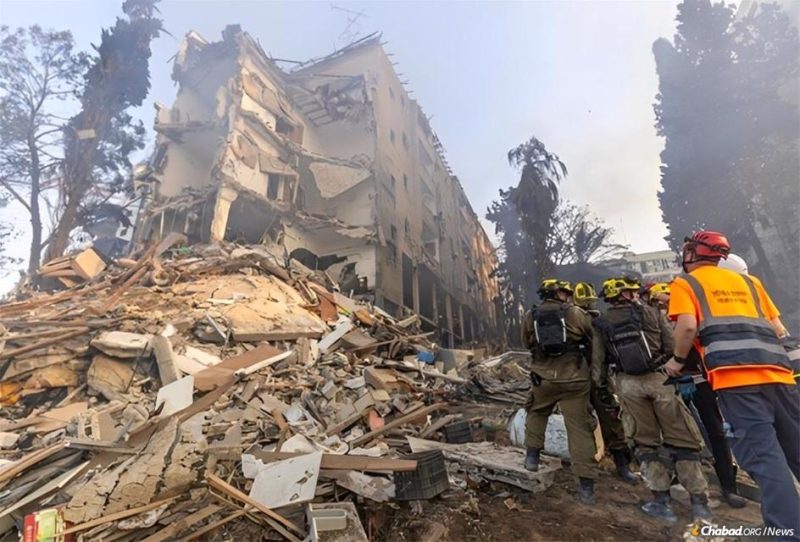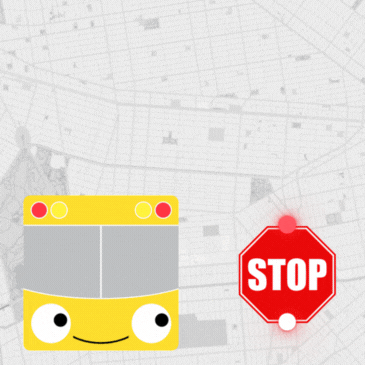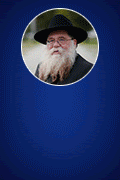
Ballistic Missile Hits Rehovot; Jews Turn to Torah, Prayer and Mitzvot
by Moshe New – chabad.org
The boom and shockwave was unlike anything Rabbi Menachem Mendel Gluckowsky had ever experienced. When an Iranian ballistic missile struck central Rehovot—a city in Israel’s center, just south of Tel Aviv—at 3 a.m. on Sunday morning, the explosion was so powerful that buildings shook 15 minutes away from the impact site. At the rabbi’s home, a 12-minute walk from ground zero, dirt from his office roof came crashing through the ceiling onto his desk.
“In Rehovot, we hear the booms of missiles being blocked [by the Iron Dome] in the sky, and when they’re close, the booms are stronger,” Gluckowsky, a longtime Chabad-Lubavitch emissary and the chief rabbi of Rehovot, told Chabad.org. “When this one fell, the boom was so strong that we knew it must have been close.”
The Iranian ballistic missile—one of 70 fired at Israel Sunday night—struck the older section of Rehovot’s city center. Multiple buildings were destroyed on impact, while the shockwave shattered storefront windows for hundreds of meters along the main street. Rooftops lost their shingles. The local mikvah suffered damage, including dislodged tiles and broken mirrors. At least 42 people were wounded throughout the city, including a toddler and his mother. Miraculously, no lives were lost. The Weizmann Institute of Science, a university located on Rehovot’s northern edge, also suffered damage, with fires continuing to burn hours after the attack.
For Rehovot’s residents, in addition to physically rebuilding from the rubble, the question becomes how to cope with the ongoing crisis. With schools, stores and businesses closed, the public transport system operating at half capacity and now much of the city’s center in ruin, many find themselves wanting to know what to do next.

‘You Bring Us a Sense of Security’
It was in the cramped bomb shelter of Gluckowsky’s residential building on Friday night that the rabbi got his first glimpse at the answer. The building houses 34 condominiums with a diverse mix of Jewish residents—families with young children, elderly couples, Russian immigrants, both religious and secular Jews.
The first sirens sounded not long after many families had made kiddush. As neighbors hurried downstairs, Gluckowsky observed the fear etched on people’s faces.
“I realized that we are here, as Chabad-Lubavitch shluchim, to bring light to the darkness,” he said.
Gluckowsky started leading the group in “Shalom Aleichem” and “Eishet Chayil,” tunes that nearly every Israeli is familiar with. Then he began teaching traditional Chabad niggunim. He shared stories and led everyone in reciting Tehillim (Psalms). Quickly, the palpable anxiety made way to a sense of resolve.
“Everyone calmed down,” Gluckowsky recalled. “People told me that ‘when you’re here, we’re all calm. ‘You bring us a sense of security.’”
It wasn’t he himself providing the security; the rabbi noted, but the power of the mitzvot he was facilitating. By the time the next sirens sounded after the conclusion of Shabbat, he brought down coins to distribute to the children to give to tzedakah (charity), and it wasn’t long before the adults were joining in. Gluckowsky’s wife, Rochel Bayla, brought candies and snacks so people could make blessings.
“In these moments, we have a chance to teach our children and grandchildren right here in this bomb shelter the power of a mitzvah to help someone,” Gluckowsky said. “We are teaching them to daven. That when we need Hashem [G‑d], there is an address. This is something priceless that we can give them in these fraught moments.”
The spiritual awakening wasn’t confined to one building’s bomb shelter. Across Rehovot, residents started to use their time in saferooms and bomb shelters for Torah study, prayer and acts of kindness. Many have reached out to Chabad to check the mezuzahs on the doorposts of their bomb shelters.
The response has been overwhelming. Since Shabbat, more than 25,000 good deeds have been pledged by children across the community. Yeshivah students began going door-to-door offering men the opportunity to put on tefillin.
Chabad volunteers have organized hot meal deliveries for elderly residents through a “meals on wheels” program. Community members living alone were paired with families or other lone residents who had stronger bomb shelters, ensuring no one would face the next siren in isolation.

‘It’s a Miracle’
For Gluckowsky, the mathematical impossibility of Israel’s survival during the Iranian barrage is nothing short of miraculous.
“When I went to visit the impact site for the first time I was shocked by the damage,” the rabbi explained. “I saw how much damage just one of these ballistic missiles could inflict and we saw it was just one of hundreds being lobbed. It’s a miracle that only a few hit [referring to the other three missiles that impacted, in Ramat Gan, Bat Yam and Haifa].”
The global attention, he believes, serves a Divine purpose—demonstrating to the world the miracles that G‑d sends to the Land of Israel and to the Jewish people. “To Jews around the world sending their prayers, doing good deeds in the merit of our protection: we feel it and we know it, and it gives us the strength that we know we’re not in it all alone.”
The work of rebuilding Rehovot continues on multiple fronts. Construction crews have already started to clear debris from damaged buildings while insurance adjusters assess the destruction. The mikvah requires repairs before it can fully reopen.
But amid the ruin, Gluckowsky sees hope. “It’s important that we are able to cut through the pessimism and give in to optimism,” he says. “The Rebbe [Rabbi Menachem M. Schneerson, of righteous memory] always said that ‘peace’ agreements do not bring about peace. We knew about this. What we’re seeing right now is that in addition to the warnings, the Rebbe also gave us ammunition to deal with this—namely, through spreading the observance of Torah and mitzvahs.”













